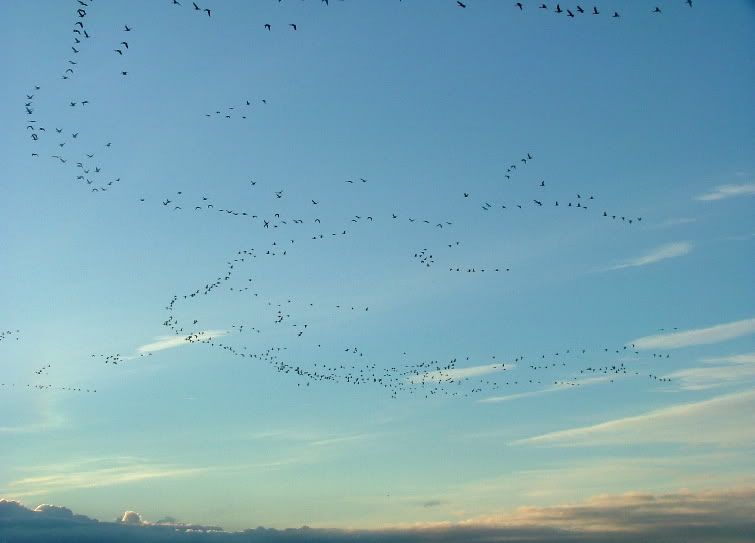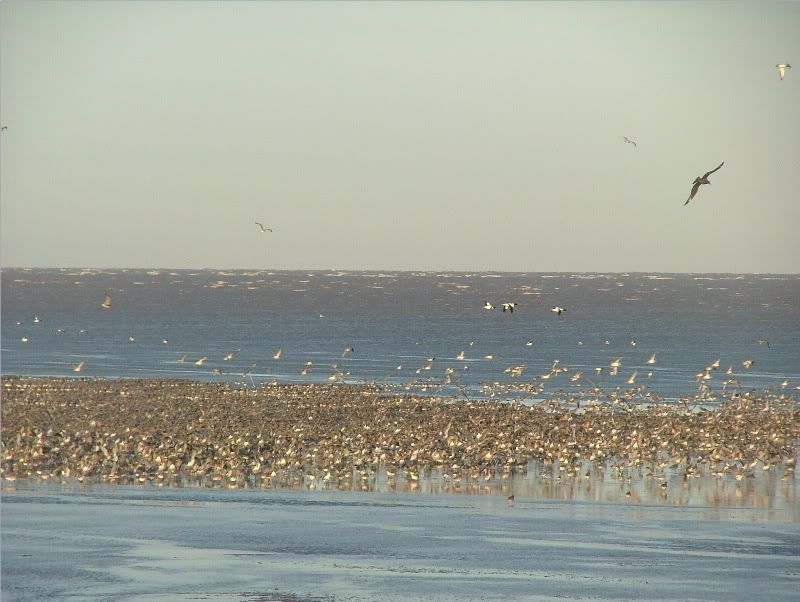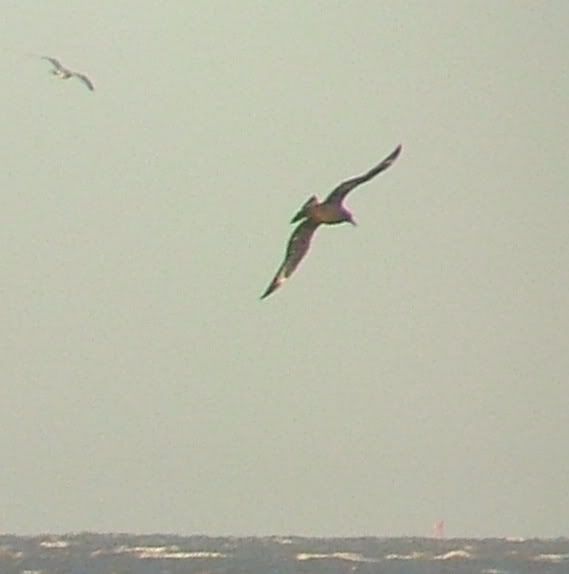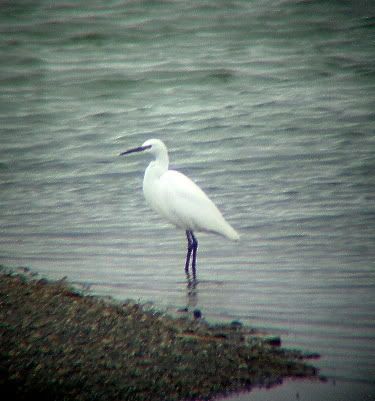It may be cold outside at the moment, still the ABB days go well at Carsington. Tuesday was all about the schools really, with three classes through and genuine wide-eyed excitement from plenty of them. Who knew primary school aged girls could get so excited about Lapwings? It's great!
If you're a birder, go on, give volunteering a go!
43 species from the Wildlife Centre on Tuesday, then a slightly above average 50 on Sunday, means we always have something to show people. Highlights have perhaps been the Siskin with at least ten birds around. Two Dunlin, Snipe and Redshank keep things interesting wader-wise, and for the raptors Peregrine, Buzzard, Sparrowhawk and Kestrel do well for the side. A few other species moving around too, Great Spotted Woodpecker and Treecreeper notable visitors at our end of the big water.
Duck (mainly Tufted and Wigeon) and Lapwing numbers are down though, more than halved in the last few weeks. Perhaps they are dispersing to smaller local sites.
The only personal disappointment is not being able to reach the other end of the reservoir before dark once the hubbub has died down. A Ring-billed Gull is regularly coming in to roost on one specific island, reported at 15:30 practically everyday, a sure thing all the way from North America.
Ah well, stumbling down the paths in the twilight I did pick up a Tawny Owl swooping down onto the prey in a field nearby a known roosting tree. Rare sight of a common, if secretive, bird, so I'm happy.
Monday, 26 November 2007
General Update
Labels:
abb,
Aren't Birds Brilliant,
birding,
carsington,
Derbyshire,
RSPB,
volunteering
Sunday, 18 November 2007
My Little Auk
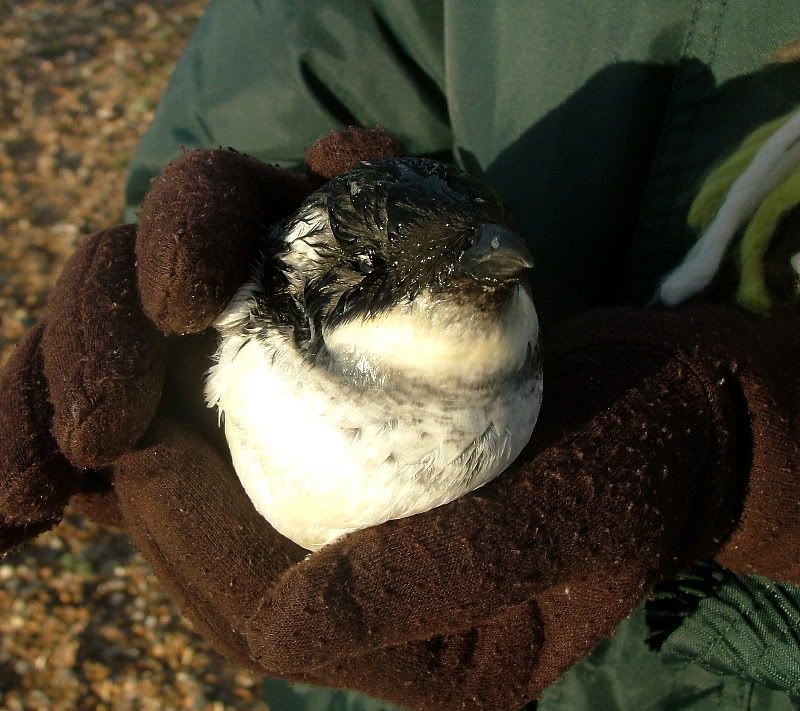
So the the saga of the Little Auk. I take you back to Monday before last, a cold and blustery wintry morning at Snettisham, masquerading as November 12th. The ongoing Little Auk wreck (following the deep North Sea depression that had battered if not quite lacerated through the North Norfolk coast with a strong tidal storm surge) was taking place further east, so we weren't quite expecting to find any. Oh but we did. First sighting came with four bobbing around in the high tide, only a few feet from the shore. Lovely squat birds, sort of bullet-shaped, and for all my bird knowledge they still looked like fresh chicks. Of course they weren't.
A nice lifer then, but onward back to the pub for the &B part of our bed and breakfast weekend.
The walk back to the car park at Snettisham takes anywhere between 30 and 50 minutes depending on how many times the birds stop you, and stopped we were by another Little Auk, this time on the lagoon behind the holiday huts. This time something was wrong, the bird paddled weakly and as we stood to watch, it slowly but inevitably floated into the horrible foam on the windblown side of the water.
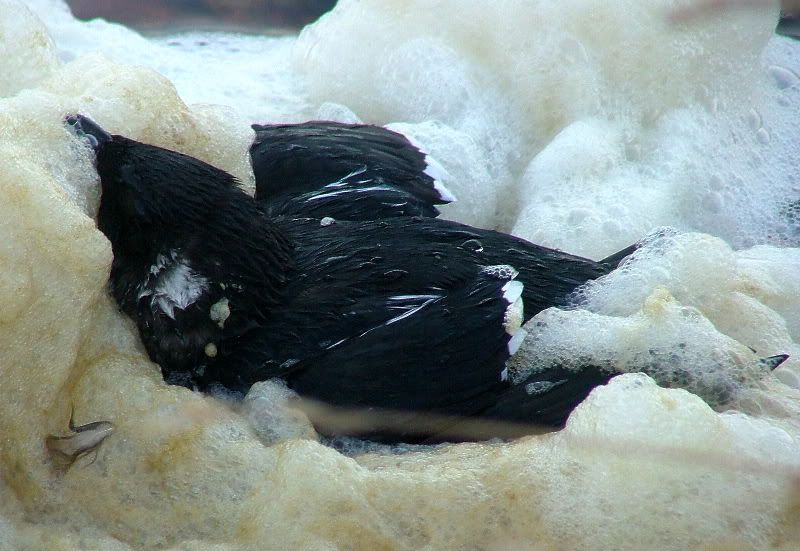
It was stranded, rolling in this froth, utterly stuck. Now usually I'm not one to intervene; Magpies I'm perfectly happy to have them as a garden visitor and when the Sparrowhawk takes one of my Blackbirds I'm actually quite thrilled - it's like a David Attenborough film outside your kitchen window. This time, clearly leaving things be wasn't going to be satisfactory, this birds, its dignity, it deserved better.
Glad for my gloves I scooped it up and rushed the damp fella back over the seawall to the beach, in hopes of refloating him. In retrospect it was never going to happen, and after a few feeble efforts the slosh of the sea's motion grounded the bird again.
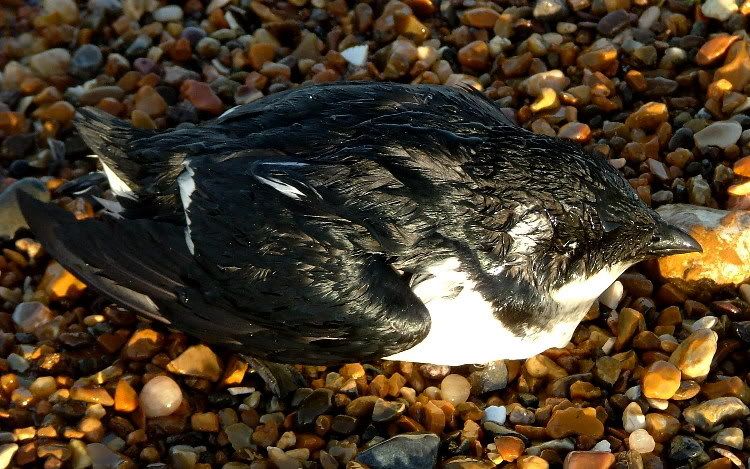
Settling on the conclusion that it was likely to die, we reasoned that the best thing to do would be to rest the bird back down on the bank of the lagoon, this time on the sheltered sunny side. If was to die at least it was somewhere quiet, and sadly die it did, as we discovered after returning from our breakfast. The bird was never very lively, in truth it wasn't only exhausted but water-logged too.
Elsewhere in the country I'm sure similar stories are being recited, with almost 30,000 Little Auks past the Farne Islands in one day, and individuals blown as far inland as Doncaster, it's clear this was quite the birding event of the autumn this year in Britain, a lot of birders happy for the tick and I'm sure plenty of grateful gulls were happy to gobble the weakened auks down whole.
There will be a lot of discussion over why this occurred, was it just the storm pattern that pushed the auks so far south or could it be something more worrying like climate change induced disturbance of their marine food source? Likely to be both I would suppose.
The smallest of the auks (about the size of a Starling but much heaiver - believe me!), this species does come closer to shore in winter than its larger cousins, although for the large part they'll stick to the open ocean, the North Sea, the Atlantic and as far north as the Arctic ice shelf. They live for upto 10 years, perhaps a good deal more, and feed chiefly on plankton, invertebrates and small fry.
A lifer for us then, a life diminished too, and a bird held in the hand that quite probably came from a Spitsbergen breeding colony, a good deal north of the Norwegian mainland, from one of the nests not plundered by a Polar Bear. Memorable stuff from our hobby yet again.
link - an article in the Independent about this Little Auk wreck
Labels:
birding,
birds,
little auk,
Norfolk,
RSPB,
rspb snettisham,
Snettisham
Thursday, 15 November 2007
Birds On a Bigger Scale
It's Thursday and I'm still tired from the weekend, but what a weekend!
For our autumn getaway I promised my girlfriend we'd go find a true birding spectacle; the great goose and wader flocks of the Wash. The destination was easy enough to pick, it had to be Snettisham RSPB reserve.
From Saturday through Monday we visited the reserve each morning (5:30am starts - ouch!) and twice in the evening, I suppose we just couldn't get enough. We were lucky on several counts, firstly because the Pink-footed Geese came down to their British wintering grounds earlier than is usual this year so the flocks flying from and to their roost were at their probable maximum, around 40,000 birds, perhaps more - you begin to guess with so many birds.
Morning seemed the best time to watch them going over because they leave in good light, whereas it was upto an hour after sunset when they flew into roost on the mudflats. The whole thing lasted over 30 minutes, with numerous skeins leaving almost all the time for the fields inland, mostly to nibble on left over roots of post-harvest sugar beet and potato crops, as apparently farmers are encouraged to leave a little something for them. That's why they gather in Norfolk in numbers you just wouldn't have seen a few mere decades ago.
The other bird that are around Snettisham in big numbers are of course the Knot, with a roost of around 10,000 birds covering the islands and banks of the lagoon behind in the dunes. The mass of greyness almost looks like a large patch of gravel at a distance. They are only in during high-tide so that meant for our visit we missed them gathering but were able to watch them depart at daybreak. Sort of a double spectacle with the geese going over at the same time.
In among the roost were occasional interlopers, a few Bar-tailed Godwit, Dunlin and Redshank on the edges of the huddle. Once the Knot went, that was it, whoosh and everything snaked over out onto the mudflats, leaving us with a few Dabchicks and Goldeneye left on the water, as well as a couple of hundred lazy Oystercatchers. It was exciting watching, waiting, for that moment of grand départ.
Other birds of note at Snettisham were a nice Barn Owl hunting in the pre-dawn gloom (ask for your money back if you go to Norfolk and don't see one), a couple of Merlin winged through on the wind, similarly a Great Skua was around, a few flushed Red-legged Patridge, and of the passerines a few Fieldfare battled the gusts, as well as Skylark, Meadow Pipit, Linnet and a Stonechat around the car park. On the mudflats, a good typical mixture of Golden Plover flocks, solitary Grey Plovers, lots of Dunlin, Curlew, Turnstone and Sanderling, a handful of Avocet. As well as the Pinkies wildfowl-wise there were also plenty of Greylag, Brent and Canada Geese, Shelduck, surprisingly large numbers of Mallard, and the one Scaup went through too.
On our final morning at the reserve, something rather special occurred, we found Little Auk bobbing in the high tide just off the beach, part of the Great Little Auk Wreck of '07. It began with 4 of them, but that was just the beginning of the story. More about that in another entry though, and the other sites we dotted along the coast last weekend, as well as more videos.
Gravel?
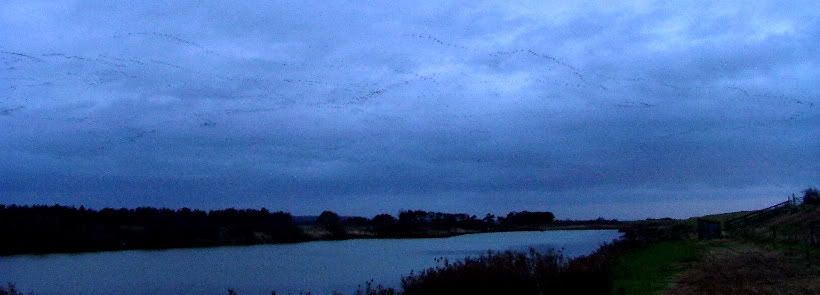
Labels:
flocks,
knot,
little auk,
Norfolk,
pink-footed goose,
rspb snettisham,
the wash
Thursday, 1 November 2007
One New Bird Fan
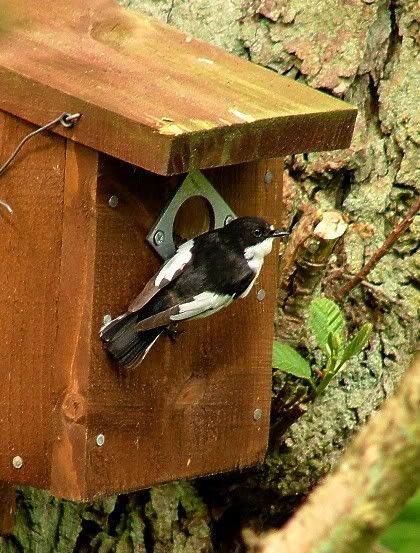
So I was baby-sitting my niece today, she's two-and-a-half, a cracking age for having fun, and in the midst of the day something catches her eye on the computer as it flicks through on my screensaver gallery. It was this shot of a Pied Flycatcher at Coombes Valley RSPB. She asks with no small puzzlement, "What's that birdie doing on that 'ole?"
I explain it's a daddy bird and his babies are keeping safe inside the box, and that he takes food to them there. She asks me what his name is and I try to get across that they're called flycatchers. Anyway, her conclusion to all this new information, "It's cute!"
She's hardly wrong and you know what, I think we might have snagged her already!
For Birds, For People, For My Niece!
Subscribe to:
Posts (Atom)



